Accelerate > Publications
Search this online library featuring the latest FAO publications, issue papers and briefs which offer up-to-date knowledge and innovative insights for SDG acceleration.
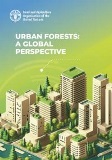
Urban forests: a global perspective
2023
Urban forestry is not a one-size-fits-all solution; each city and region, with its own unique set of challenges and opportunities, requires tailored strategies. In recognition of the diversity and distinctiveness of urban forestry issues and their potential for mitigating environmental and socioeconomic inequality across the globe, FAO has asked experts around the world to share their views on how urban forests and trees are perceived and managed in their respective geographical areas,...
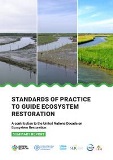
Standards of practice to guide ecosystem restoration: A contribution to the United Nations Decade on Ecosystem Restoration
2023
The United Nations Decade on Ecosystem Restoration 2021–2030 (hereafter “UN Decade”) recognizes the critical need to prevent, halt and reverse the degradation of the world’s ecosystems. Effective restoration of degraded ecosystems is of paramount importance for recovering biodiversity, ecosystem health and integrity, ecosystem goods and services, climate-change mitigation and human health and well-being.

Soils for nutrition: state of the art
2022
This booklet contributes to understanding processes related to soil fertility from the perspectives of food production and food security, and the environmental and climate change impacts associated with fertilizer misuse and overuse. The booklet also outlines the main areas of opportunity and the way forward to solve the nutrient imbalance prevailing in our current agrifood systems.
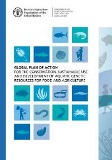
Global Plan of Action for the Conservation, Sustainable Use and Development of Aquatic Genetic Resources for Food and Agriculture
2022
This Global Plan of Action for the Conservation, Sustainable Use and Development of Aquatic Genetic Resources for Food and Agriculture (GPA) was developed by FAO at the request of the members of the Commission on Genetic Resources for Food and Agriculture in response to the needs and challenges identified in the first global assessment of the status of Aquatic Genetic Resources for Food and Agriculture (AqGR).
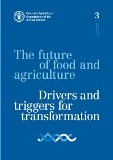
The future of food and agriculture – Drivers and triggers for transformation
2022
This report aims at inspiring strategic thinking and actions to transform agrifood systems towards a sustainable, resilient and inclusive future, by building on both previous reports in the same series as well as on a comprehensive corporate strategic foresight exercise that also nurtured FAO Strategic Framework 2022–31. It analyses major drivers of agrifood systems and explores how their trends could determine alternative futures of agrifood, socioeconomic and environmental systems.
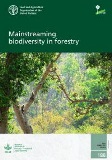
Mainstreaming biodiversity in forestry
2022
This study is a collaboration between FAO and the Center for International Forestry Research (CIFOR), lead centre of the CGIAR research programme on Forests, Trees and Agroforestry (FTA). Illustrated by eight country case-studies, the report reviews progress and outlines the technical and policy tools available for countries and stakeholders, as well as the steps needed, to effectively mainstream biodiversity in forestry.
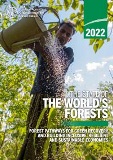
The State of the World’s Forests 2022 - Forest pathways for green recovery and building inclusive, resilient and sustainable economies
2022
Against the backdrop of the Glasgow Leaders’ Declaration on Forests and Land Use and the pledge of 140 countries to eliminate forest loss by 2030 and to support restoration and sustainable forestry, the 2022 edition of The State of the World’s Forests (SOFO) explores the potential of three forest pathways for achieving green recovery and tackling multidimensional planetary crises, including climate change and biodiversity loss...
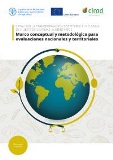
Catalysing the sustainable and inclusive transformation of food systems
2022
Food systems are intimately linked to our lives – through the food we eat, our nutrition and health, our livelihoods, jobs, and the environment and natural resources of the planet. The main challenge for food systems is to produce nutritious food for all while preserving our biodiversity and environment and ensuring equitable distribution of wealth. This brief provides a summarized version of the methodology used to conduct a global assessment of food systems in over 50 countries ...

Framework for Action on Biodiversity for Food and Agriculture
2022
Biodiversity for food and agriculture comprises all the components of biodiversity that contribute to crop and livestock production, forestry, fisheries and aquaculture – both wild and domesticated, and at genetic, species and ecosystem levels. It is vital to food security and nutrition, livelihoods and the supply of a range of ecosystem services...

The State of the World’s Land and Water Resources for Food and Agriculture 2021 – Systems at breaking point
2021
Satisfying the changing food habits and increased demand for food intensifies pressure on the world’s water, land and soil resources. However, agriculture bears great promise to alleviate these pressures and provide multiple opportunities to contribute to global goals. Sustainable agricultural practices lead to water saving, soil conservation, sustainable land management, conservation of natural resources, ecosystem and climate change benefits....
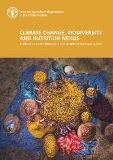
Climate change, biodiversity and nutrition nexus
2021
This paper identifies entry points within agri-food systems to improve biodiversity and diets, two levers that can be used to enhance nutrition and optimize environmental sustainability while ensuring social equity, especially of the most vulnerable people. It also presents recommendations for concrete actions by key stakeholders – governments, academia, civil society, private sector, and development partners –to build resilient, inclusive, and sustainable agri-food systems. KEYWORDS:

Nature-based solutions in agriculture: Sustainable management and conservation of land, water and biodiversity
2021
In recent years, considerable progress has been made in the area of Nature-based Solutions (NbS) that improve ecosystem functions of environments and landscapes affected by agricultural practices and land degradation, while enhancing livelihoods and other social and cultural functions. This has opened up a portfolio of NbS options that offer a pragmatic way forward for simultaneously addressing conservation, ...

Nature-based solutions in agriculture: Project design for securing investment
2021
Today, the global food system drives a ten trillion-dollar economy that connects 7.5 billion consumers and a diverse array of more than 1 billion food producers (farmers, ranchers, pastoralists, and fish harvesters). Approximately one-half of the world’s habitable lands are used for agriculture (Ritchie, 2019). Not surprisingly, the food production system has a massive impact on our planet. As we look to the future, global food demand is set to increase 50%,...
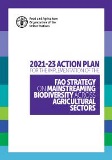
2021-23 Action plan for the implementation of the FAO strategy on mainstreaming biodiversity across agricultural sectors
2021
The action plan for the implementation of the Food and Agriculture Organization of the United Nations strategy on mainstreaming biodiversity across agricultural sectors was approved at the 166th FAO Council in 2021 in view of preparations for the post-2020 global biodiversity framework.
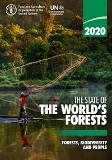
The State of the World’s Forests 2020 - Forests, biodiversity and people
2020
The State of the World’s Forests 2020 assesses progress to date in meeting global targets and goals related to forest biodiversity and examines the effectiveness of policies, actions and approaches, in terms of both conservation and sustainable development outcomes. A series of case studies provide examples of innovative practices that combine conservation and sustainable use of forest biodiversity to create balanced solutions for both people and the planet.

FAO Strategy on Mainstreaming Biodiversity across Agricultural Sectors
2020
The FAO strategy on mainstreaming biodiversity was approved at the FAO Conference in 2019, in view of preparations for the post-2020 global biodiversity framework. The Strategy aims to mainstream biodiversity across agricultural sectors at national, regional and international levels in a structured and coherent manner, taking into account national priorities, needs, regulations and policies and country programming frameworks.

Global Forest Resources Assessment 2020
2020
This assessments, examines the status of, and trends in, forest resources over the period 1990–2020, drawing on the efforts of hundreds of experts worldwide. The production of FRA 2020 also involved collaboration among many partner organizations, thereby reducing the reporting burden on countries, increasing synergies among reporting processes, and improving data consistency.
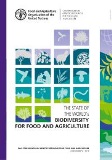
The State of the World's Biodiversity for Food and Agriculture
2019
The State of the World’s Biodiversity for Food and Agriculture presents the first global assessment of biodiversity for food and agriculture worldwide. Biodiversity for food and agriculture is the diversity of plants, animals and micro-organisms at genetic, species and ecosystem levels, present in and around crop, livestock, forest and aquatic production systems.
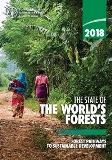
The State of the World’s Forests 2018 - Forest pathways to sustainable development
2018
This edition of The State of the World’s Forests is aimed at enhancing our understanding of how forests and their sustainable management contribute to achieving several of the SDGs. Time is running out for the world’s forests: we need to work across sectors, bring stakeholders together, and take urgent action. The State of the World’s Forests 2018 identifies actions that can be taken to increase the contributions of forests and trees that are necessary to accelerate progress towards the SDGs.
Browse by SDG
- SDG1: No Poverty
- SDG2: Zero Hunger
- SDG3: Good Health & Well-being
- SDG4: Quality Education
- SDG5: Gender Equality
- SDG6: Clean Water & Sanitation
- SDG7: Affordable and Clean Energy
- SDG8: Decent Work and Economic Growth
- SDG9: Industry, Innovation and Infrastructure
- SDG10: Reduced Inequalities
- SDG11: Sustainable Cities and Communities
- SDG12: Responsible Consumption and Production
- SDG13: Climate Action
- SDG14: Life Below Water
- SDG15: Life on Land
- SDG16: Peace, Justice and Strong Institutions
- SDG17: Partnerships for the Goals
Browse by Better
Browse by Priority Area
- Innovation for Sustainable Agriculture Production
- Blue Transformation
- One Health
- Small-Scale Producers' Equitable Access to Resources
- Digital Agriculture
- Healthy Diets for All
- Nutrition for the Most Vulnerable
- Safe Food for Everyone
- Reducing Food Loss and Waste
- Transparent Markets and Trade
- Climate Change Mitigating and Adapted Agrifood Systems
- Bioeconomy for Sustainable Food and Agriculture
- Biodiversity and Ecosystem Services for Food and Agriculture
- Achieving Sustainable Urban Food Systems
- Gender Equality and Rural Women's Empowerment
- Inclusive Rural Transformation
- Agriculture and Food Emergencies
- Resilient Agrifood Systems
- Hand-in-Hand Initiative
- Scaling up Investment
